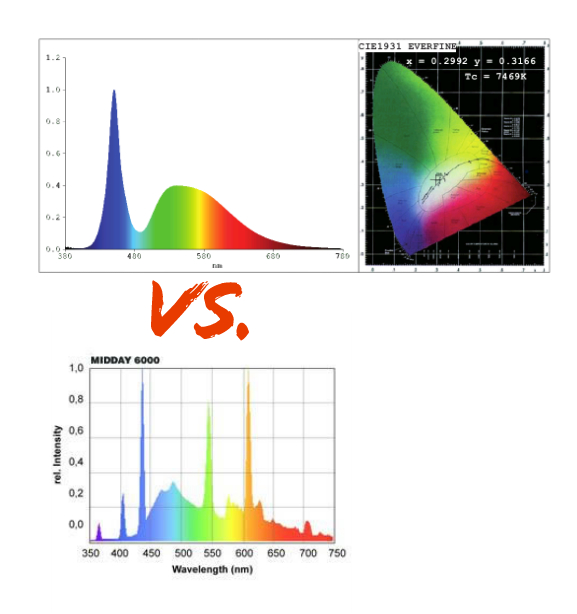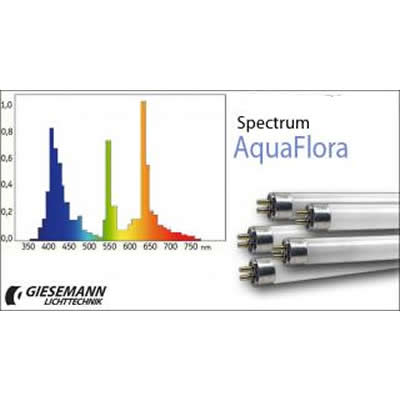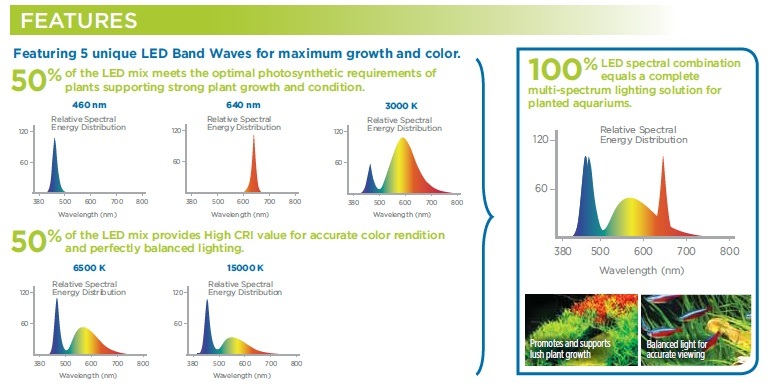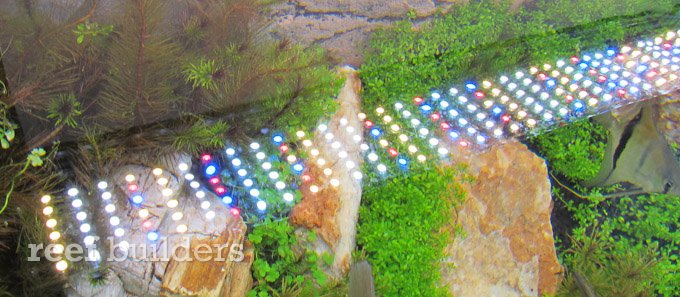I'm not sure why you say they are prone to disorders since this is a natural process that occurs in the plants. What type of disorders have you expierenced? If you are keeping nutrients low yet keeping Gh-magnesium levels high, using high light, and high CO2 levels how is that any different since that also forces the plants to produce red color. Its just another way to achieve color using a different method. There is no wrong or right way and I will agree to disagree that other methods cause any problems or disorders for the plants nor does it mean your going to have algae issues. I don't even use CO2 and achieve intense color, even deep in my 30" tall tank. One thing I've learned over the years is that what works in one persons tank doesn't mean it will work in another tank. There are just too many individual factors in each tank to say one method fits all IMO.
You are using an out of date browser. It may not display this or other websites correctly.
You should upgrade or use an alternative browser.
You should upgrade or use an alternative browser.
26g Bow Front - My First Dutch Inspired Scape Journal
- Thread starter Brian_Nano12g
- Start date
The friendliest place on the web for anyone with an interest in aquariums or fish keeping!
If you have answers, please help by responding to the unanswered posts.
If you have answers, please help by responding to the unanswered posts.
ScottsPets
Aquarium Advice Apprentice
- Joined
- Apr 29, 2013
- Messages
- 24
Thanks again Scott! I'll definitely try that. So you don't think it has anything to do with spectrum? I feel colors look a bit washed out and drab. Excellent for greens but at the expense of other colors unfortunately.
Also, may I ask what aquatic store you manage?
Spectrum plays a role but I am firm in believing ferts play an even more important one. Take a red object and illuminate it underneath your fixture. If the reflecting color acceptable, there is no need to swap fixtures if PAR is on point.
Just recently, I had a customer with a dilemma similar to yours. She was using a row of basic 10k LED bulbs, or so she claimed. Granted, I do not know what kind of light it was outputting nor do I know it's spectrum, it was a simply switch from liquid ferts to dry ferts that did the trick. As Rivercats voiced, every aquarium is different.
Rcguerra
Aquarium Advice FINatic
Not to steal Brian's thread, but I just purchased these to address similar conditions on my aquacubes:
Archaea 27W power compact light fixture (clamp on type) [AIC-008] - $60.00 : Aqua Forest Aquarium, ADA USA, Aqua Design Amano
Archaea 27W power compact light fixture (clamp on type) [AIC-008] - $60.00 : Aqua Forest Aquarium, ADA USA, Aqua Design Amano
aqua_chem
Aquarium Advice Addict
The problem of how to make red plants red is something that many people have fought with for some time. There are a lot of competing theories on the matter but at the end of the day we have little more than a bunch of good guesses. All we really know is that low nitrates and high light make plants red. There is a lot of theorizing on the spectrum needed for this though, with the main debate that I've heard is sheer quantity of light vs blue spectrum importance. I personal find it hard to believe that red light makes plants turn red because a red plant is reflecting red light, not using it. This particular case is interesting because the emission spectrum of those LEDs is very blue heavy, but you're still not getting the pigmentation you're wanting. We pretty much know that something about Giesemann bulbs brings out the reds in plants, but I've always attributed it to the blue rather than the reds. For the sake of reference, can you throw up a spectrum of an Aquaflora as well?
Also, what are your current nitrates? Could you have bottomed out on them trying to get your plants to turn red, causing the BGA?
I've never really heard of GH being a major player in coloration of plants. You want to have enough to not be deficient, but beyond that unless you've got very high levels, you're probably not going to see any benefit.
Also, what are your current nitrates? Could you have bottomed out on them trying to get your plants to turn red, causing the BGA?
I've never really heard of GH being a major player in coloration of plants. You want to have enough to not be deficient, but beyond that unless you've got very high levels, you're probably not going to see any benefit.
Brian_Nano12g
Aquarium Advice Addict
I was under the impression since certain plants appear a color due to the wave length of light they're reflecting, they develop that particular color. So if red spectrum is limited, what need would a plant have to develop anthocyanin pigment to reflect it?
Then appearing red once the plant is stressed enough due to low nitrogen so green chlorophyll is no longer masking the anthocyanin? I've read that plants also develop anthocyanin pigments to "act as light-attenuators thereby protecting the tissues from photoinhibition, or high-light stress." Hence the need for high light... But again, pretty sparse on red spectrum.
As for the parameters of my water chemistry, i mistakenly forgot my test kit at my house as this 26g is at my parents' house.
Then appearing red once the plant is stressed enough due to low nitrogen so green chlorophyll is no longer masking the anthocyanin? I've read that plants also develop anthocyanin pigments to "act as light-attenuators thereby protecting the tissues from photoinhibition, or high-light stress." Hence the need for high light... But again, pretty sparse on red spectrum.
As for the parameters of my water chemistry, i mistakenly forgot my test kit at my house as this 26g is at my parents' house.
ScottsPets
Aquarium Advice Apprentice
- Joined
- Apr 29, 2013
- Messages
- 24
I'm not sure why you say they are prone to disorders since this is a natural process that occurs in the plants. What type of disorders have you expierenced? If you are keeping nutrients low yet keeping Gh-magnesium levels high, using high light, and high CO2 levels how is that any different since that also forces the plants to produce red color. Its just another way to achieve color using a different method. There is no wrong or right way and I will agree to disagree that other methods cause any problems or disorders for the plants nor does it mean your going to have algae issues. I don't even use CO2 and achieve intense color, even deep in my 30" tall tank. One thing I've learned over the years is that what works in one persons tank doesn't mean it will work in another tank. There are just too many individual factors in each tank to say one method fits all IMO.
I am not saying my method is the only way, nor am I saying it is the preferred way. I advise against it because you are tanking a strong hold on two important nutrients in nitrates and phosphates. Doing so jeopardizes plant health. Without vigorously keeping an eye on those parameters can lead to bottoming out, ie as AquaChem stated. Further leading to algae or various plant diseases because your plants are now more sensitive to such.
Again, I am not saying this is the only way nor is it the correct way. Each aquarium is different, that is surely fact. I will say that this method IS a way, regardless of other factors.
Brian_Nano12g
Aquarium Advice Addict
This particular case is interesting because the emission spectrum of those LEDs is very blue heavy, but you're still not getting the pigmentation you're wanting. We pretty much know that something about Giesemann bulbs brings out the reds in plants, but I've always attributed it to the blue rather than the reds. For the sake of reference, can you throw up a spectrum of an Aquaflora as well?
Here's the Finnex Ray 2 (top) versus G Midday:

Here's an AquaFlora Giesemann:

Now here's an example of a new LED fixture that incorporates dedicated reds in the LED strip. This is the Fluval Aqualife & Plant Performance LED. I might just have to replace my Ray 2 with it! LOL


I advise against it because you are tanking a strong hold on two important nutrients in nitrates and phosphates. Doing so jeopardizes plant health. Without vigorously keeping an eye on those parameters can lead to bottoming out, ie as AquaChem stated. Further leading to algae or various plant diseases because your plants are now more sensitive to such. .
Bottoming out for nitrates and BGA tend to go hand in hand quite often. When letting nitrates drop below 10ppm which is exactly what you said you should do, you run a higher risk of developing BGA. I learned that from Aqua. You would vigorously have to keep your eye on that as well with your method as you stated nitrates of 6ppm or lower.
I always tell people that are new to planted tanks to keep nitrates at 10-20ppm and phosphates at .5-1.0ppm. This is a good standard for most hobbiest.
But when running a tank with high light, CO2 or liquid carbon, and a good dosing plan and in my case a 220g tank with over 2/3 of the tank planted with non-green plants that actually use alot of phosphate. And in order to attain more non-green color nitrates need to be low, 10ppm.
I've never expierenced diseases caused by dosing and that is what I was asking... what diseases/problems (not algae) have you expierenced by dosing higher phosphates? I have exceeding healthy plants and I'm sure people dosing El which puts higher amounts of ferts in their tanks also have healthy plants that are in no way prone to disease. This is where we disagree.
I get color at a low phosphate reading but is nothing compared to when I increased dosing over the past few months and I found that non-green color becomes more intense with higher levels of phosphates (in my tank which has high lighting and low nitrate). This causes no harm to plants, which is what I getting at and your saying jeopardizes plant health. Any hobbiest that custom doses their tank or uses El are going to monitor their tank levels closely. Same with keeping a low nitrate level which you abdocate and would have to monitor closely.
You advise against my method but other than using Aqua's example which is referring to BGA and not the plants and saying it jeopardizes plant health when in fact I've found plants flourish. So what I am still wanting to know is "how" adding higher amounts of ferts, like El or custom dosing PPS-Pro as I do, jeopardizes plant health.
Brian_Nano12g
Aquarium Advice Addict
Yeah i now understand why phosphorus is important to showing red coloring in plants. Phosphate is a key factor in the composition of anthocyanin pigments. But now i think while phosphate is a key component to the equation, the prerequisite would be red spectrum to facilitate the need for the plants to utilize the phosphate to generate anthocyanin.
Is my logic flawed here? I'm still trying to wrap my head around this :-/
Is my logic flawed here? I'm still trying to wrap my head around this :-/
ScottsPets
Aquarium Advice Apprentice
- Joined
- Apr 29, 2013
- Messages
- 24
Bottoming out for nitrates and BGA tend to go hand in hand quite often. When letting nitrates drop below 10ppm which is exactly what you said you should do, you run a higher risk of developing BGA. I learned that from Aqua. You would vigorously have to keep your eye on that as well with your method as you stated nitrates of 6ppm or lower.
I always tell people that are new to planted tanks to keep nitrates at 10-20ppm and phosphates at .5-1.0ppm. This is a good standard for most hobbiest.
But when running a tank with high light, CO2 or liquid carbon, and a good dosing plan and in my case a 220g tank with over 2/3 of the tank planted with non-green plants that actually use alot of phosphate. And in order to attain more non-green color nitrates need to be low, 10ppm.
I've never expierenced diseases caused by dosing and that is what I was asking... what diseases/problems (not algae) have you expierenced by dosing higher phosphates? I have exceeding healthy plants and I'm sure people dosing El which puts higher amounts of ferts in their tanks also have healthy plants that are in no way prone to disease. This is where we disagree.
I get color at a low phosphate reading but is nothing compared to when I increased dosing over the past few months and I found that non-green color becomes more intense with higher levels of phosphates (in my tank which has high lighting and low nitrate). This causes no harm to plants, which is what I getting at and your saying jeopardizes plant health. Any hobbiest that custom doses their tank or uses El are going to monitor their tank levels closely. Same with keeping a low nitrate level which you abdocate and would have to monitor closely.
You advise against my method but other than using Aqua's example which is referring to BGA and not the plants and saying it jeopardizes plant health when in fact I've found plants flourish. So what I am still wanting to know is "how" adding higher amounts of ferts, like El or custom dosing PPS-Pro as I do, jeopardizes plant health.
I was not arguing against your method. I was attacking the very own method I described. The pursuit of REDs is easily achievable getting levels to what I noted.
Did you feel I was attacking your method and ei dosings? Oh boy, that is certainly not the case.
Yeah i now understand why phosphorus is important to showing red coloring in plants. Phosphate is a key factor in the composition of anthocyanin pigments. But now i think while phosphate is a key component to the equation, the prerequisite would be red spectrum to facilitate the need for the plants to utilize the phosphate to generate anthocyanin.
Is my logic flawed here? I'm still trying to wrap my head around this :-/
You know me and lights... lol! But I always felt it was the higher red spectrum that aided in red pigments. You know those 10K bulbs didn't do anything for red coloring in my plants and actually made them look a kind of sickly washed out pink. The new 6000k bulbs while much dimmer to the human eye seemed to really aid in the development of better red pigments. I've also been watching some of the posts of others adding the red bulbs to their LED's and are in early stages saying they are seeing a better development of color. I think your getting your head wrapped around this pretty good. But you know I am a firm believer in "if your not getting the results you want, expierement to find a method which will get your desired results". There are multiple factors that need to be looked at and I think you should try altering the red spectrum and seeing if it helps. I always figure what's the harm of trying something? If it doesn't work then chalk it up to something you learned and continue to try different methods. It's taken me over a year to zero in everything in the big tank to get the results I want. And you'll never know if you don't try!
Not attacking the methods but when someone says they "advise against it" I would like an explaination as to what exactly is wrong and how it jepordizes a plants health that you repeatedly stated. It's nothing more than that.
Brian_Nano12g
Aquarium Advice Addict
Thanks Janis. I'll give my LED venture one more go with the Fluval LED "full spectrum" before i throw in the towel and go T5HO. I'll also apply more focus on nitrate and phosphates. Experiment time! No more excuses! Haha
Brian_Nano12g
Aquarium Advice Addict
Oh i'll let Scott reply specifically, but the reason i understand what he was saying about limiting nitrates and how that can force reds out in plants is best described, to me, in the 4th post in this very interesting thread i found on the topic..
http://kolkata-aquarium.com/viewtopic.php?f=15&t=284
http://kolkata-aquarium.com/viewtopic.php?f=15&t=284
aqua_chem
Aquarium Advice Addict
You know me and lights... lol! But I always felt it was the higher red spectrum that aided in red pigments. You know those 10K bulbs didn't do anything for red coloring in my plants and actually made them look a kind of sickly washed out pink. The new 6000k bulbs while much dimmer to the human eye seemed to really aid in the development of better red pigments.
There's really two questions here. A) What makes plants red? and B) What makes red plants look red. Red plants look red because the reflect red light, so they can only look as red as the light provided. Put a bluer (or more accurately less red) bulb on them and a plant with a ton of anthrocyanins will look washed out because theres nothing to reflect. The other questions is more "how can I get a plant to express red pigments in the first place" and is much more difficult to answer. What you're describing seems to be a observation of the first questions more than the second, unless I'm misunderstanding you.
ScottsPets
Aquarium Advice Apprentice
- Joined
- Apr 29, 2013
- Messages
- 24
Not attacking the methods but when someone says they "advise against it" I would like an explaination as to what exactly is wrong and how it jepordizes a plants health that you repeatedly stated. It's nothing more than that.
According to the link Brian kindly noted:
But reducing nitrogen also limits all enzymes thus reducing the ability of plants to capture light and CO2. Achieving redness by reduction of nitrates is not recommended and if at all the method has to be implemented, it must be done gradually.
Specifically, too much nitrate reduction may reduce the stability of the system, too slow plant growth and thus reduce the production of O2, which can damage the local fauna and reduce the consumption of NH4 and thus lead to algae and cyanobacteria.
Dosing of nitrate must be carried out on a regular basis which will ensure that of complete exhaustion of NO3 will never happen but at the same time limiting the amount of nitrate in the tank will help increase the amount of anthocyanins in plants.
Thus redness in plants can be achieved by limiting nitrate in the water which in turn may cause stress in plants. It can be said that redness to some extend indicates stress in plants also.
Specifically, too much nitrate reduction may reduce the stability of the system, too slow plant growth and thus reduce the production of O2, which can damage the local fauna and reduce the consumption of NH4 and thus lead to algae and cyanobacteria.
Dosing of nitrate must be carried out on a regular basis which will ensure that of complete exhaustion of NO3 will never happen but at the same time limiting the amount of nitrate in the tank will help increase the amount of anthocyanins in plants.
Thus redness in plants can be achieved by limiting nitrate in the water which in turn may cause stress in plants. It can be said that redness to some extend indicates stress in plants also.
I still feel as if you believe I have conflicting ideas with you. I am arguing against the method I described. Doing what I stated jepordizes plants health and may lead to algae, nicely summed up in the forementioned.
ScottsPets
Aquarium Advice Apprentice
- Joined
- Apr 29, 2013
- Messages
- 24
Thanks Janis. I'll give my LED venture one more go with the Fluval LED "full spectrum" before i throw in the towel and go T5HO. I'll also apply more focus on nitrate and phosphates. Experiment time! No more excuses! Haha
Keep us posted on the Fluval LED. Have you looked in to the new Truelumen Satellite?
Brian_Nano12g
Aquarium Advice Addict
Yes I'm impressed with the ability to control the RGB LEDs to get a custom color. I might be testing out the Current Sat+ on a different build in the near future. I've just been slowly going through the motions on this 26g to find the right balance on everything and I'm eager to put this tank on cruise control and divert my attention to the tanks in my humble abode.
aqua_chem
Aquarium Advice Addict
Brian, have you ever considered just shucking out some money and building an LED fixture?
Brian_Nano12g
Aquarium Advice Addict
Yeah eventually i want to. After I do my homework learning how to properly wire them, heat sinks, drivers, etc. I'll probably have to bug Justin or whoever knows their way around them. Most likely this will come abouts when i can afford my dream monster sized rimless like an ADA 120P or something in that range. ETA on that tank is at least a year or more out.
Similar threads
- Replies
- 1
- Views
- 277
- Replies
- 4
- Views
- 403
- Replies
- 2
- Views
- 615
